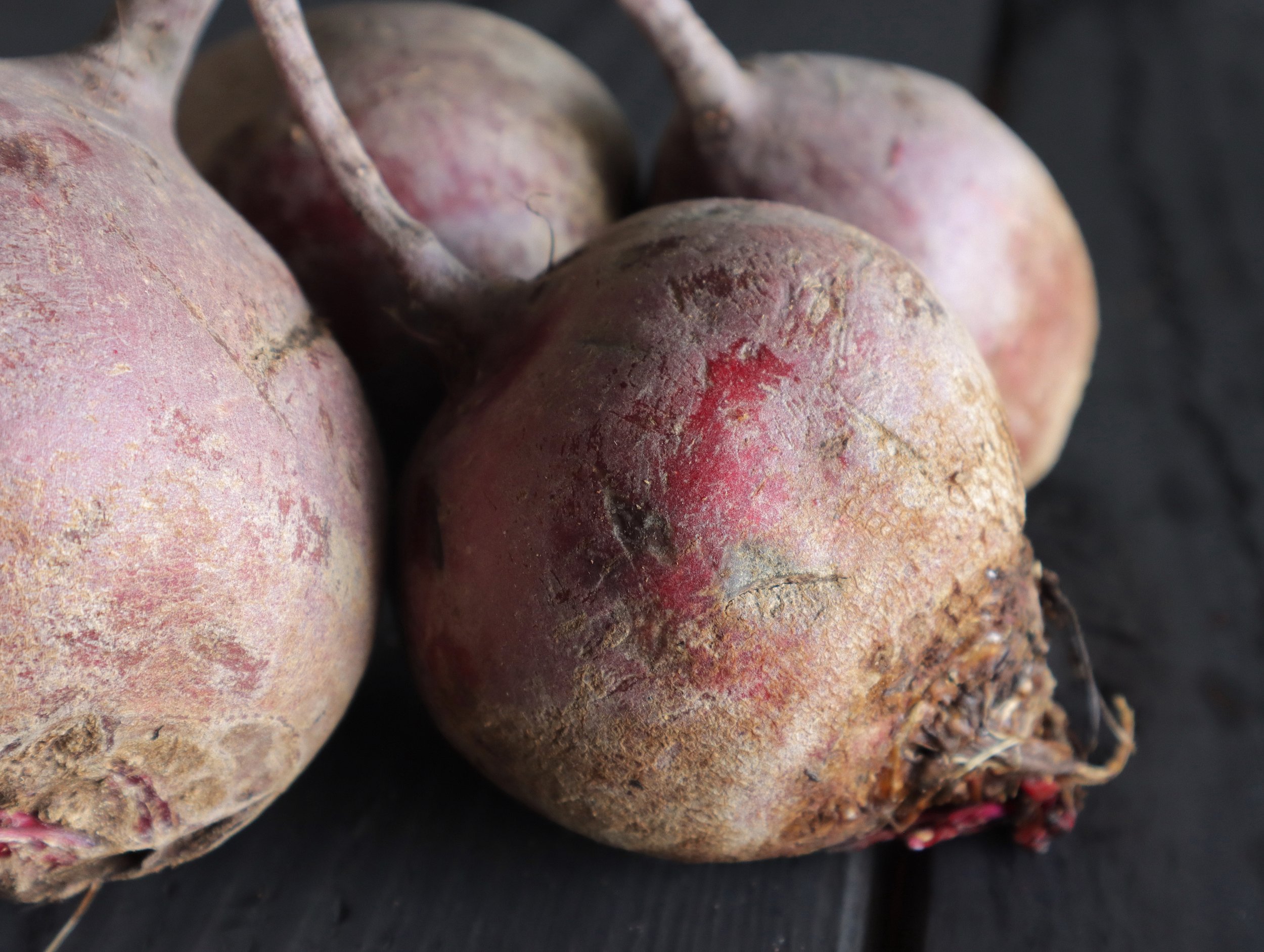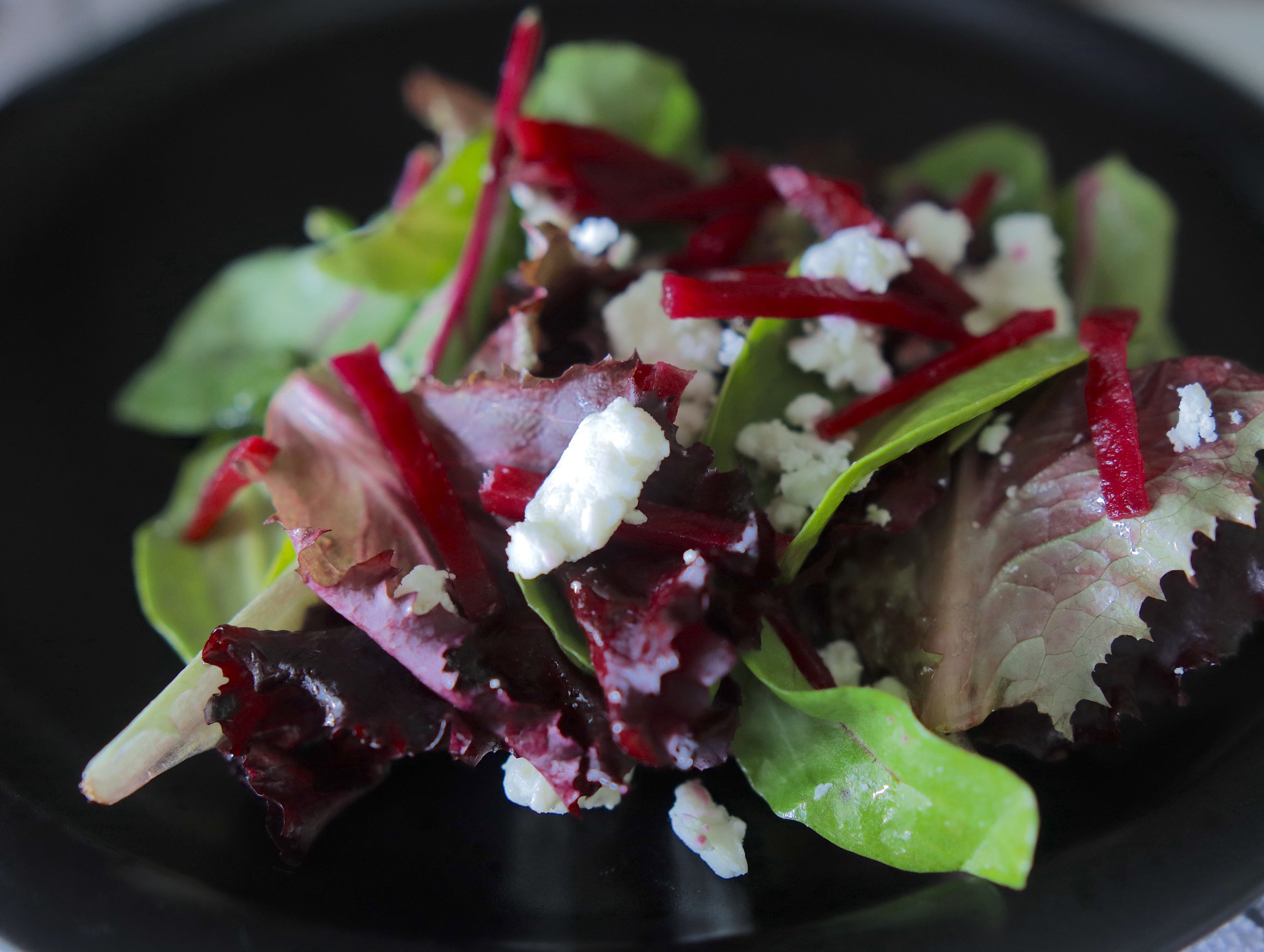Homemade Lacto Fermented Beets - Perfect For Good Gut Health
Ingredients:
2 beets, washed, peeled and thinly sliced
35 cumin seeds (a good pinch)
For the brine, done by weight in grams
Filtered or bottled spring water (needs to be non chlorinated)
Fine sea salt, non iodized
Tools needed:
Sharp knife or mandoline
Cutting board
Mixing bowl
Vegetable peeler
Wire whisk
Mason jar, pint size
Weight for keeping beets submerged (I use an empty baby food jar)
Digital scale that reads in grams
How to make it:
Peel beets and slice on mandolin if you have one or use a knife. The beets need to be sliced around 1/8 of an inch thick or less so they soften slightly after being fermented.
Wash everything with hot soapy water (hands, knife, jar etc).
Place jar on scale, zero out (tare it). Add sliced beets, cumin seeds to the jar. With the water, fill up the jar just to the bottom of the neck leaving 2 to 3 inches head space for the fermentation weight. This is to avoid spillage once the weight is placed in the jar. Record that weight. Use the following equation to get a 3% brine.
If the weight of the beets, cumin seeds and water is 875 g…multiply that value by .03. This is the amount of salt needed in grams.
In other word:
875 x .03 = 26.25 This value is the amount of fine sea salt you need in grams to make the brine. Pour out the water out from the jar with the beets holding back the beets with a mason jar lid into a mixing bowl.
Place a ramekin or small dish on the scale. Tare the scale and add the sea salt (26.25 g). I round to the nearest whole number when I get decimal points since my scale doesn’t read decimal points. This percentage difference is minimal and is still far more accurate than measuring with measuring cups and spoons. For example: if 26 / 875 (divided by), you will get 2.97%. Beets are safely fermented with a brine percentage between 2.5% and 3.5%. Whisk the salt into the water until fully dissolved to make the brine. Add brine back to the jar with the beets.
Place a weight on the beets to keep them submerged underneath the brine. This in an anaerobic environment which lactic acid producing bacteria (LAB) thrives in and is needed to ferment the food. More definitively, lactobacilli a the bacteria that is on skins of fruits, vegetables and humans. This bacteria feeds off of the natural sugars in food, thus creating the lactic acid and fermenting the beets in this case.
Do not allow any ingredients to touch air as mold will form, consequently you will need to discard the batch and start over. I don’t recommend scraping any mold if it does form. Food safety is the number 1 priority.
Kahm yeast may form, which is a byproduct of fermenting. It is harmless, but may give the beets an off flavor to those closest to the Kahm yeast. There can be a few reasons that it may form. The salt percentage is not correct, something got contaminated during the prepping process or the brine surface level may be exposed to too much air. Beet sugar levels may vary during different times of the year, the brine percentage may need to be increased when the beets are less “sugary”. I adjust about .5%. But, like I said, Kahm yeast is harmless and can be skimmed off during the timeframe the beets are fermenting. Sometimes it may form without any reasons that are obvious.
I ferment beets for 2 weeks in the pantry at room temperature. The ideal temperature range that fermentation works best at is 68-75 degrees fahrenheit. Keep the beets away from direct sunlight if you have a spot on your countertop that you want to keep it at. I place a coffee filter over the jar secured with a rubber band to keep any contaminants from entering the jar. My fermentation weight sticks out of the jar some, therefor the coffee filter works great as a cover. If you have a fermentation lid, that is ideal assuming it doesn’t interfere with the fermentation weight. You can go longer than 2 weeks if you want the beets to be more fermented, or you can go 1 week if you want them to be less fermented. It really is up to your taste and what you like.
After day 7, I check the pH of the brine to ensure lactic acid is present and the fermentation process is successfully on its way. The pH should be less than 4.6. Since 4.6 pH or more is where botulism forms, the beets will not be good to consume. Usually the pH is around 3.9-4.0 after 7 days and will be around 3.6 after week 2. I have a digital pH meter that works perfectly, though litmus paper is ok to use also.
After the fermentation time frame is done and you’re happy with the results, remove the fermentation weight and place a lid on the jar. These keep in the refrigerator and will be good for a minimum of 3 months.
Spring mix salad with matchstick cut fermented beets in a simple apple cider vinaigrette made with a splash of the brine that the beets fermented in.
I like to eat them out of the jar as is or in a salad. The brine from the jar can be used as and ingredient in a vinaigrette.
Enjoy!
-Logan


